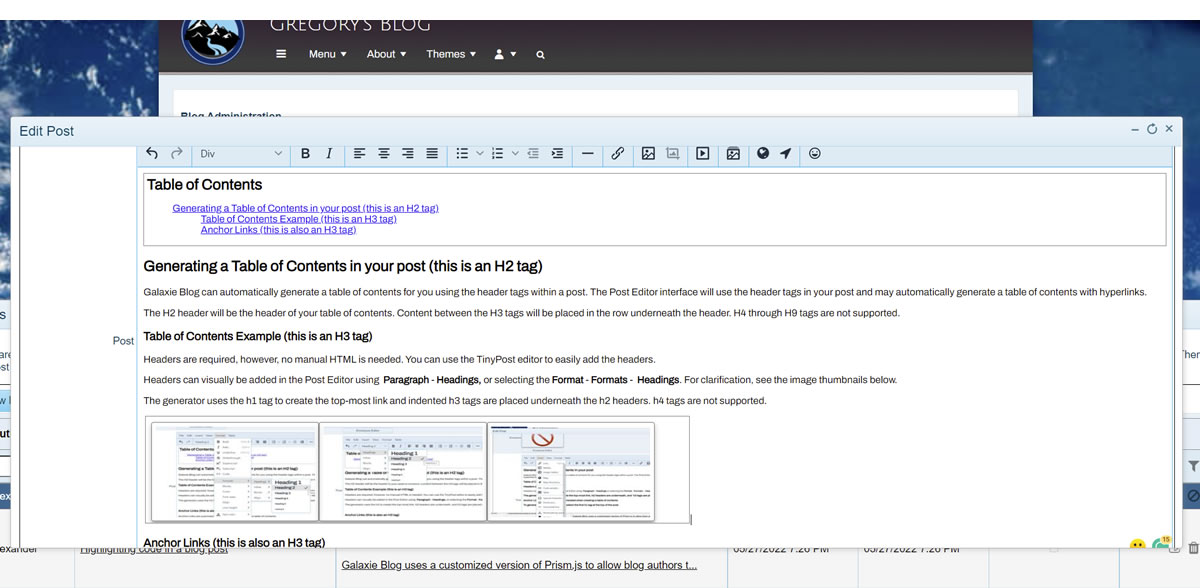Automatically Generating a Table of Contents
|
May 27 |

Note: the table of contents below was auto-generated using the header tags. See the explanation below.
Table of Contents
Generating a Table of Contents in your post (this is an H2 tag)
Galaxie Blog can automatically create a table of contents using the header tags within a post. The Post Editor interface will use the header tags in your post and may automatically generate a table of contents with hyperlinks.
The table of contents at the top of the page was automatically generated from this page.
Your table of contents will have the H2 header. Content between the H3 tags will be placed in an indented row underneath the header. H4 through H9 tags are not supported.
Table of Contents Example (this is an H3 tag)
Headers are required; however, no manual HTML is needed. You can easily add the headers using the Post Editor.
Headers can visually be added in the Post Editor using Paragraph - Headings, or selecting the Format - Formats - Headings. For clarification, see the image thumbnails below.
Anchor Links (this is also an H3 tag)
Anchor Links are automatically generated when creating a table of contents.
To generate the table of contents, place the cursor where you want to insert the TOC and click Insert - Generate Table of Contents. A table of contents should appear at the top of your post. If you change your headers, click on the TOC, and click on the refresh button to regenerate the TOC.
Tags
Galaxie Blog DocumentationThis entry was posted on May 27, 2022 at 9:37 PM and has received 827 views.



